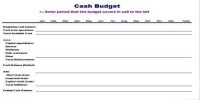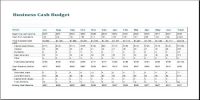A flexible budget performance report is used to compare actual results for a period to the budgeted results generated by a flexible budget. This report varies from a traditional budget versus actual report, in that the actual sales figure is plugged into the budget model, which then uses formulas to alter the budgeted expense amounts. This approach results in budgeted expenses that are significantly more relevant to the actual performance that an organization experiences.
If the flexible budget model is designed to adjust to actual sales inputs in a reasonable manner, then the resulting performance report should closely align with actual expenses. This makes it easier to spot anomalies in the report, which should be rare. Management can then focus on the significant variances to see if any actions should be taken to ensure that actual results remain close to expectations.
A flexible budget performance report is a management report that compares the actual revenues and costs for a period with the budgeted revenues and costs based on the actual sales volume. In other words, it’s a report that shows the different between the actual company performance and the budgeted performance for the actual sales volume. Basically, it compares the flexible budget with the actual results.
This report is prepared at the end of an accounting period by management to see if there are any major differences between the estimated budgeted numbers that were created at the beginning of the period and the actual ending numbers. This is a key tool because it allows management to analyze the areas of the business that are meeting their budget goals and the areas or departments that need improvement.
For example, ABC International has adopted a flexible budget model, in which the cost of goods sold should be 25% of sales. In the most recent period, actual sales were $1,000,000. When this figure is input into the model, it generates a budgeted cost of goods sold of $250,000. The actual cost of goods sold was $260,000. This information is inserted into the accounting department’s flexible budget performance report, where the cost of goods sold line item shows a $10,000 unfavorable variance.
The flexible budget model and its related reports are a significant improvement over the more common static model, where there is only one version of a budget, and that budget does not change. When a static model is the basis of comparison, the likely outcome is large favorable and/or unfavorable variances for many line items, since the static model may have been based on a sales level that is no longer relevant to actual conditions.











